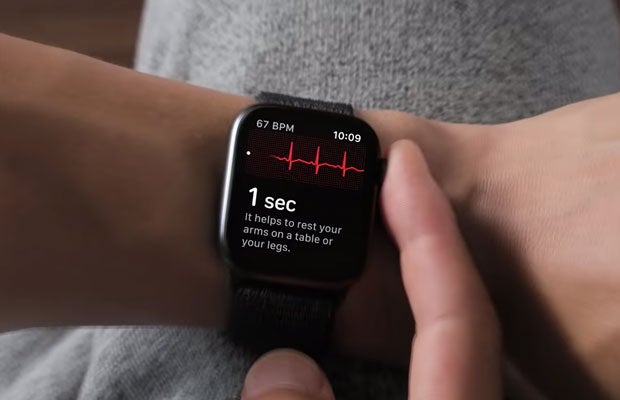

Could Emerging Sensors Revolutionize Wearable Technology?

Rapid systemic change is coming to health care in the ways that patients are monitored and how epidemic spikes are spotted. You can see early signs of this in consumer electronic devices like the Apple Watch, Google Nest smart home systems and Amazon Alexa Healthcare Skills Kit.
But those devices won’t be the brains behind the systemic change that is coming, according to researchers, technology experts and innovators working to drive this transformation. Those systems will be merely reporting devices. The real solution will be thin, soft, flexible, wireless sensors that adhere to the skin and provide personalized medical data far beyond what is captured by current mobile devices.
Writing recently in the research journal Nature, two experts from Northwestern University’s bio-integrated electronics department and the director of a Chicago based research lab, noted that millions of early versions of sensors, computers and transmitters woven into flexible films, patches, bandages or tattoos are being deployed in dozens of neurological applications alone. Within a decade, they predict, many people will be wearing sensors like these regularly. The collected data will be fed into machine-learning algorithms to monitor vital signs, spot abnormalities and track treatments.
The researchers also note that small companies are commercializing soft biosensor systems that continually measure clinical data or track certain biomarkers, such as glucose, as well as actions like swallowing and talking. More advanced flexible, wireless sensors that are soft enough to be placed on the chests of babies without damaging their fragile skin are in clinical trials.
Former Apple CEO John Sculley in Fortune recently issued a similar forecast for sensor advances. He says Amazon’s Jeff Bezos, Google parent company Alphabet’s Larry Page, Microsoft’s Satya Nadella, and Apple’s Tim Cook are exploring how these innovations can usher in a new era of health care technology.
Sculley expects Apple to add more sensor-based applications to its Apple Watch and believes the tech giant eventually will offer an Apple Health subscription service that connects its watch to physicians. This could make Apple an even bigger player in consumer health, some financial analysts believe, with Morgan Stanley pegging Apple’s health care market opportunity at $313 billion in revenue by 2027.
“Google could put advanced medical sensors in its Pixel smartphones, along with its AI voice-assistant technology that interprets personalized sensor-generated medical data,” Sculley writes. That would enable the company to merge its sensors, along with its AI-powered booking service Duplex and smart home system Nest, into a health subscription service. Amazon’s Alexa Healthcare Skills could follow a similar path by using miniaturized high-tech sensors in its Echo device to provide health care services to chronic care patients at home, Sculley says.
If all this sounds like distant-future science, it may not be as far away as you might think. The consumer electronics journal Twice reports that Wu Wei, a materials scientist at China’s Wuhan University, believes that stretchable, skinlike consumer electronics are nearly upon us. And while fabrication of artificial skin remains complex and time-consuming, with materials and manufacturing challenges still to be solved, the technology for sensors is emerging quickly.
The opportunity for health care providers as future advances occur will be how to connect by creating digital dashboards for physicians and patients to make clinical decisions. The data generated from these devices could be used to drive improvements in health and personalized care and reduce costs. Providers also may want to explore partnerships with companies like Apple, Google and Amazon to facilitate pilots and eventual deployment of these emerging tools. Partnerships like these could prove valuable in accelerating transformation to this rapidly evolving environment.



